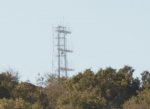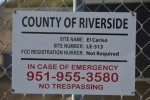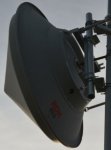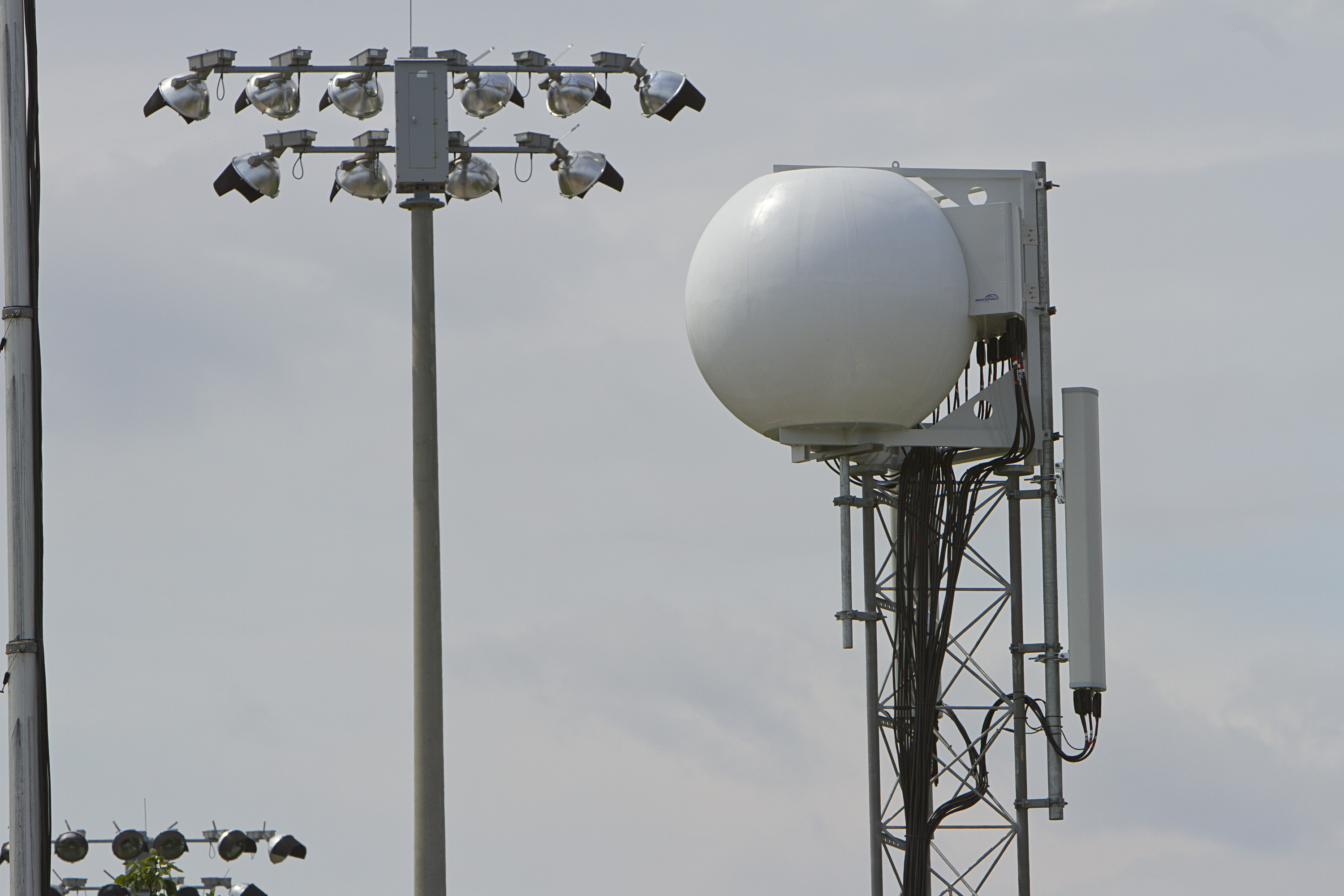In reviewing the thread, I missed a few things here.
If you know it's wrong then cite your source.
I'm the source. 35+ years professional experience, building and maintaining sites for various entities in the Angeles, San Bernardino, and Cleveland national forests, as well as desert areas. I get around a bit.
The specific problem I have with you, ZZ, you quote in sections and then say it's wrong but don't say what the correct information is.
Actually, I do. Go back and re-read my posts. If I see something in error, I so state, and state the correct data.
You stalk me from topic group to topic group and always make sure to insert comments attempting to state that I'm wrong but seldom give anything of technical value.
We seem to have a common interest in sites and systems in the local area. How about that.
Let me begin with the fact that the Forest Service system is fully capable of simulcast repeater operation. But they do not use it that way.
This is not correct. My source: my eyes. I frequently find myself at sites with USFS radios for the systems we're currently discussing. They lack the required full duplex links, and precision frequency references., They are typically a stand alone Daniels repeater and duplexer. There is no link to bring status tone and audio for voting. There is no link for simulcast transmitter control. It simply isn't there at any of the USFS occupied sites that I've ever been to. I'm not sure what the source of YOUR information is.
If you know anything about simulcast,
you know that there is overlapping coverage area in which signals that produce a wah wah wah sound.
A properly designed and aligned simulcast system does NOT go "wah wah wah". Great pains are taken to insure that they don't. Simulcast requires precise control of transmitter frequency, audio frequency response and levels, and precise timing of audio "launch delay". The end result is,, usually, listeners being unable to tell that they're listening to multiple transmitters.
The "wah wah wah" sound is the result of multiple transmitters on the same frequency but otherwise unsynchronized, such as what the USFS uses.
When they are slightly out of phase it's even more pronounced. How do I know? Because I run numerous repeaters that are in simulcast mode. How many do you run?
The actual number is in the hundreds, but alas, none of them are in the ham band.
Do you know what a Spectra-Tac voter is? The Spectra-TAC Total Area Coverage Comparator is a nice device.
Indeed it is. As is the Astro-Tac, Digi-Tac, and the JPS voter. I've designed and built systems using them all, Bob. I am quite familiar with receiver voting.
They do not use tone select transmitter steering. If they did the dispatcher would not tell them to come up on a specific tone or they would not tell the dispatcher the time that they are on. Unless know the area that they are in and use that tone.
But that's exactly what they're doing when they refer to a repeater as "Tone 4" or whatever. C'mon, Bob. You hear them say that all the time. That's how they tell each other what repeater to use. If one uses tone 4 and the other uses tone 3, you get the "wah wah wah" sound, because the repeaters are on the same pair, but completely unsynchronized. That, specifically, is NOT what simulcast is.
When they change tones it comes in on the dispatchers console and they press the transmitter button next to it. Or they press Select and use the large transmit button on the Centracom. You'll tell me I'm wrong but you won't tell me how. That means you're speculating.
The consoles key a control station. The console can select tones, typically what they do is send an audible tone from the consolse to the control station. A tone panel at the control station decodes the audible tone, and replaces it with a subaudible tone at the control station transmitter. It's done this way because PL can't easily or cheaply be sent over wirelines, or microwave circuits. So, the end result is operator selection of PL tone transmitted from their control station to the selected repeater. The mobiles simply change modes to one on the same frequency pair and labeled with the desired tone. Forest Net tone 1, and Forest net tone 2 would occupy two modes in the radio, and is how the mobile selects the proper tone. The dispatcher calls someone and states "on forest net tone 3", and the mobile selects tone 3 on his radio, and they communicate through the same repeater.
If there's sufficient overlap, one could be on tone 1, and the other could be on tone 3, but you'd hear "wah wah wah" when both repeaters key up at the same time. It's a frequent occurrence.
My source is me. I've built and maintained such systems for various wildfire agencies. That's how they do it, Bob.
...That means that if two transmitters key up at the same time, which they would not do on tone select transmitter steering...
But they CAN and they DO get keyed up at the same time. It goes "wah wah wah".
which would steer the signal to one transmitter based on the voted receive of the station calling, I can often hear it. You write that you weren't sure if they even use voting. You aren't sure but I'm wrong? How then would transmitter steering work?
Yep. I know they use tone select transmitter steering. I see no evidence that they use receiver voting. Tone select transmitter steering works just fine with no voters.
Transmitter steering works based on a voted signal that tells the system which site to steer to automatically. The Forest Service radio system like the Cal Fire radio system is based on a honeycomb network of transceiver sites. They can operate in repeater mode, simulcast mode, and talk-around. Their normal mode is talk around.
Cal Fire doesn't use simulcast.
My source: Me. I know that system.
CHP uses transmitter steering. It's specifically uses voting.
CHP predominantly uses simulcast. My source: Me. I've seen that system, and stood in front of their transmitters that say "simulcast component. Make no adjustment unless in contact with technician at..." I told you this several years ago in another thread when you were posting as tomasG. It's a sticky that you can still easily find.
The CHP officers don't manually change the tone. The system automatically votes which receiver has the best signal to noise ratio and steers the transmitter closest to the officer on the assumption that if he's best heard coming in on a particular receive site he will best hear the dispatcher on the same location. I can be listening to Santa Ana in particular and they are loud and clear. Suddenly they get a unit down south of Loma Ridge on the south side of the Santiago mountain range and I can barely hear them. That's transmitter steering. Fully automated transmitter steering.
Yes, there is some automatic transmitter steering in the CHP system. It's a mix, depending on the specific channel.
Hearing simulcast sites is actually the curse of living at this altitude. When two transmitters key up it sometimes makes the signal difficult to copy.
It can be, and I don't envy you that. Simulcast systems are designed for the users coverage area, not scanner listeners.
I did not say Ranger Peak. I said Ranger. That is the FCC name. It is a 101 foot self supporting tower at 5085 ft ASL. It is 6 miles Southeast of Banning. It is Northwest of the Vista Grande Forest Service fire station.
Yep. That's the site. Ranger Peak, or just Ranger if one prefers. I'm quite familiar with it.
I also specifically said Idyllwild.
You don't know what I'm not posting. But yet you argue.
At some point, you completely mangled several sites in the discussion. I'm commenting specifically what you post Bob, not what you're thinking. Only my wife has any reasonable expectation that I might be a mind reader, but in that, she's wrong, too.
You take somebody with knowledge and access and reduce it to this.
But much of what you're posting is incorrect. You SAY you have knowledge, but then you post stuff that's not correct, and get pissy when it's corrected. I just don't know what to do here, other than what I'm doing. I don't want to argue with you, but I want the data that gets collected and compiled to be reasonably accurate.
None of you knows what I did or who I did it for.
Well, there's quite a pile of little Google breadcrumbs out there. I know what you HAVEN'T done, and that's engineer large public safety systems. And that's quite ok. But some of us have. I know what's BS and what's not.
I have repeatedly said that I am disabled now. That doesn't mean my information access has dried up. Yet you're so quick to argue information that you think is wrong.
Can I at least have a pass on the stuff that I KNOW is wrong?








